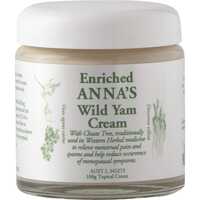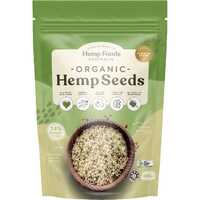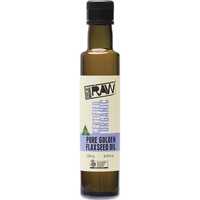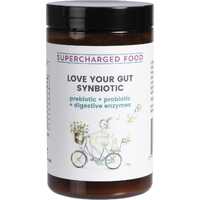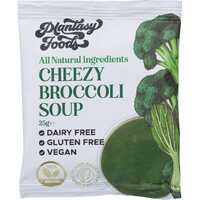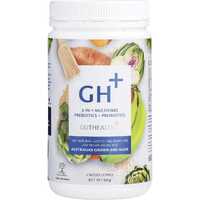Fibre is a fundamental component of plant life, and it's absolutely essential to human health. While it's not a macronutrient like protein, fats, and carbohydrates; and it can't even be digested by your body, fibre has an important role to play at all stages of life. Among other things, fibre helps to support digestion, circulation, and weight management, and it also has a huge influence on gut health.
Let's take a deep dive into dietary fibre, including its nature, categorisation, and health benefits. We'll include a list of fibre-rich foods, all of which are vegetarian and vegan-friendly.
What is Fibre?
Fibre is the name given to a broad range of natural and artificial substances, all of which are significantly longer than they are wide. In fact, whether you're talking about mineral fibres, wood fibres, or vegetable fibres, the shape of fibre is its main defining factor. Fibres are used for building, clothing, and eating; and biological fibres help to make up our muscles, tendons, and hair.
Plant fibres are used to make paper and clothing, and they're also found in many foods. These vegetable fibres are based on cellulose, often in combination with a compound called lignin. From cotton and flax to hemp and banana, a variety of fibrous plants have been used throughout human history. Some plant materials are also consumed as dietary fibre, with these compounds lacking nutrients but essential to human nutrition.
Dietary fibre, or roughage, is plant-derived food that can't be broken down. It is unaffected by human digestive enzymes, and it passes through our stomach and intestines relatively unchanged. Despite its inability to be digested, or actually because of it, dietary fibre helps to keep your digestive system working properly. Not only does fibre change the contents of your gastrointestinal tract, but it also affects how other nutrients and chemicals are absorbed within it.
Dietary fibre mostly consists of plant cell walls and components from them, including cellulose, pectin, and lignin. It also features non-starch polysaccharides (NSPs), which originate from microorganisms and other sources. Fibre is mostly a carbohydrate, although some of its components are associated with polyphenolics and proteins. Dietary fibre has a diverse chemical composition, and it's present in a wide range of foods.
What Are The Different Types of Fibre?
There are two main types of fibre, which are distinguished by their ability to dissolve in water:
- Soluble fibre is fermentable, and it includes a number of prebiotic fibre materials. This type of fibre dissolves in water to form a viscous gel-like substance. Soluble fibre can help to lower blood cholesterol and glucose levels (see below), and it's found in peas, beans, apples, citrus fruits, oats, and barley.
- Insoluble fibre is typically not fermentable, although some types are fermented slowly in the colon. Insoluble fibre acts as roughage, increases stool bulk, and promotes the movement of material through your digestive system. Insoluble fibre is found in whole wheat products, nuts, beans, and vegetables such as cauliflower and green beans.
Fibre has long been categorised as either soluble or insoluble, but it can also be defined based on source, solubility, fermentability, or physiological effects. There is some overlap between soluble and insoluble fibres, and most common fibre-rich foods contain both types. Additionally, the prebiotic nature of fibre is increasingly recognised in the context of human health.
Instead of splitting fibre into 'soluble' or 'insoluble', this new train of thought describes how the gastrointestinal tract (GIT) microbiota responds to fibrous materials from either of these categories. It's important to note, however, that while all prebiotics are classified as fibre, not all fibres are prebiotics.
The Health Benefits of Fibre
Fibre is essential to human health, with consumption associated with a range of health advantages. Consuming fibre offers numerous digestive benefits, and it provides a massive boost to gut health. Eating fibre-rich foods also helps to lower cholesterol and blood sugar levels, and it may assist with calorie reduction and weight loss.
The following benefits are among the most noteworthy:
Improves gut health
The gut microbiota plays a central role in human health. While fibre is not digested directly, it feeds gut bacteria and helps to improve the diversity and balance of gut flora. This fermentation process supports growth through short-chain fatty acids (SCFAs), providing energy for important cellular functions and enabling metabolism and appetite regulation. Consuming fibre also helps to regulate bowel movements and maintain overall digestive health.
When people think of nutrition, they generally think of the three macronutrients: carbohydrates, proteins, and fats. While these things are obviously central to life, they're absorbed into your bloodstream before they make it to your large intestine. They do little for your gut flora, which is where fibre comes in. We simply don’t have the enzymes to digest fibre, so they reach the large intestine mostly unchanged. The beneficial bacteria in your gut can digest fibre, however, which functions as a prebiotic to improve a number of health outcomes.
Lowers cholesterol and blood sugar levels
Eating a fibre-rich diet has been shown to improve cardiovascular health, lowering cholesterol levels and helping to control blood sugar in some situations. According to research, whole grains help to decrease total cholesterol and LDL cholesterol compared to control groups. These benefits may be due to the fibre content of whole grains, and what's more, they help to lower bad cholesterol without decreasing good HDL cholesterol levels.
Fibre has also been shown to control blood sugar levels from carbohydrates. However, only soluble fibre with high viscosity seems to offer this benefit. This is important if you eat a high-carb diet, as fibre-rich foods help to reduce the likelihood of carbohydrates raising your blood sugar to harmful levels. Viscous soluble fibre includes asparagus, sweet potatoes, turnips, oranges, apricots, mangoes, barley, and oat bran.
May aid with weight loss
The best way to lose weight is to eat well and enjoy regular exercise. Some foods play a bigger role than others when it comes to energy and weight regulation however, with dietary fibre possibly helping to reduce hunger and improve body composition in healthy individuals. Fibre helps to soak up water in the intestine, which slows the absorption of nutrients and increases feelings of fullness. In this context, certain soluble fibres can have a significant effect.
What Foods Are High in Fibre?
To live a long and healthy life, it's important to maintain adequate levels of fibre in your diet. Luckily, fibre is included in many foods, all of which provide numerous other health benefits. From vegetables and whole grains to nuts and beans, the following foods contain lots of healthy fibre:
Beans
Legumes are very high in fibre, including beans and other members of the Fabaceae genus. Navy beans and white beans have the highest levels, but all beans are packed with beneficial fibre. From kidney beans to lima beans to pinto beans, these versatile foods are full of flavour and great for your gut. Beans also provide a great source of protein, which makes them a must for vegetarians and vegans.
Berries
Berries are known for their delicious taste and beneficial antioxidant content, and for very good reason. They're also a fantastic source of fibre, however, with a single cup of blueberries offering 3.6 g of fibre, and blackberries and raspberries not far behind. Berries also provide lots of beneficial vitamins and minerals, and they make a great snack at any time of the day.
Broccoli
Broccoli is a mainstay in many dishes, from pastas and bakes to stir-fries and salads. Apart from being versatile and delicious, this cruciferous vegetable is also highly nutritious. Broccoli is high in vitamin C, vitamin K, iron, and potassium, and it has more protein than most other vegetables. Broccoli is also rich in fibre, at 2.4 g per cup or 5-10% of the recommended daily intake.
Whole grains
Natural whole grains are another fantastic source of fibre, although levels differ considerably between products. For example, while barley is made from 17.3% fibre, corn is 7.3% and brown rice is just 3.5%. Other than barley, the most fibre-rich grains include rye at 15.1%, triticale at 14.6%, and wheat at 12.2%. Overall, whole grain breads and cereals are a great way to add more fibre to your diet.
Nuts
Nuts are an efficient and highly reliable source of fibre, and they're easy to enjoy with cereal, as snacks, or with your evening meal. Roughly 50 mixed nuts offer the same fibre as 2 slices of wholemeal bread or 1 cup of cooked broccoli. While they're all healthy, some nuts have more fibre than others. Chestnuts have the highest fibre content, followed by almonds, hazelnuts, pistachios, and Brazil nuts.
Some other products deserve special mention. Apples are a great fibre-rich food, as are bananas, potatoes, avocadoes, and even popcorn. Like all things related to your diet, sometimes the best foods are the ones you're most likely to eat.
At Healthy Being, we have a wide range of fibre-rich foods to choose from, including probiotic and prebiotic powders, protein bars and balls, and delicious snacks for any time of the day. Visit our website today and enjoy free shipping options across Australia and worldwide delivery!


 Certified Organic
Certified Organic Vegan Friendly
Vegan Friendly  Vegetarian
Vegetarian Organic Ingredients
Organic Ingredients Dairy Free
Dairy Free Gluten Free
Gluten Free Keto Friendly
Keto Friendly

















